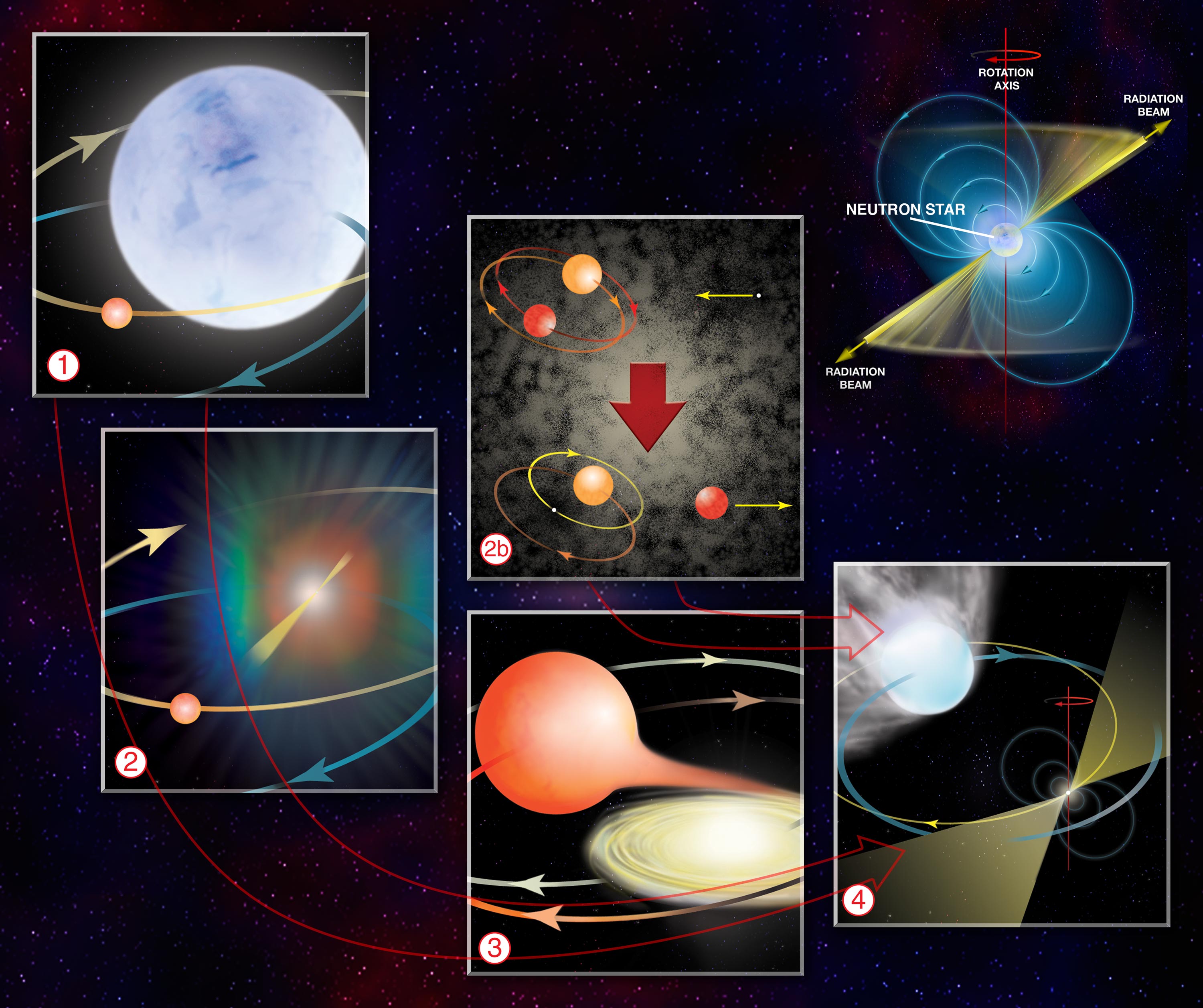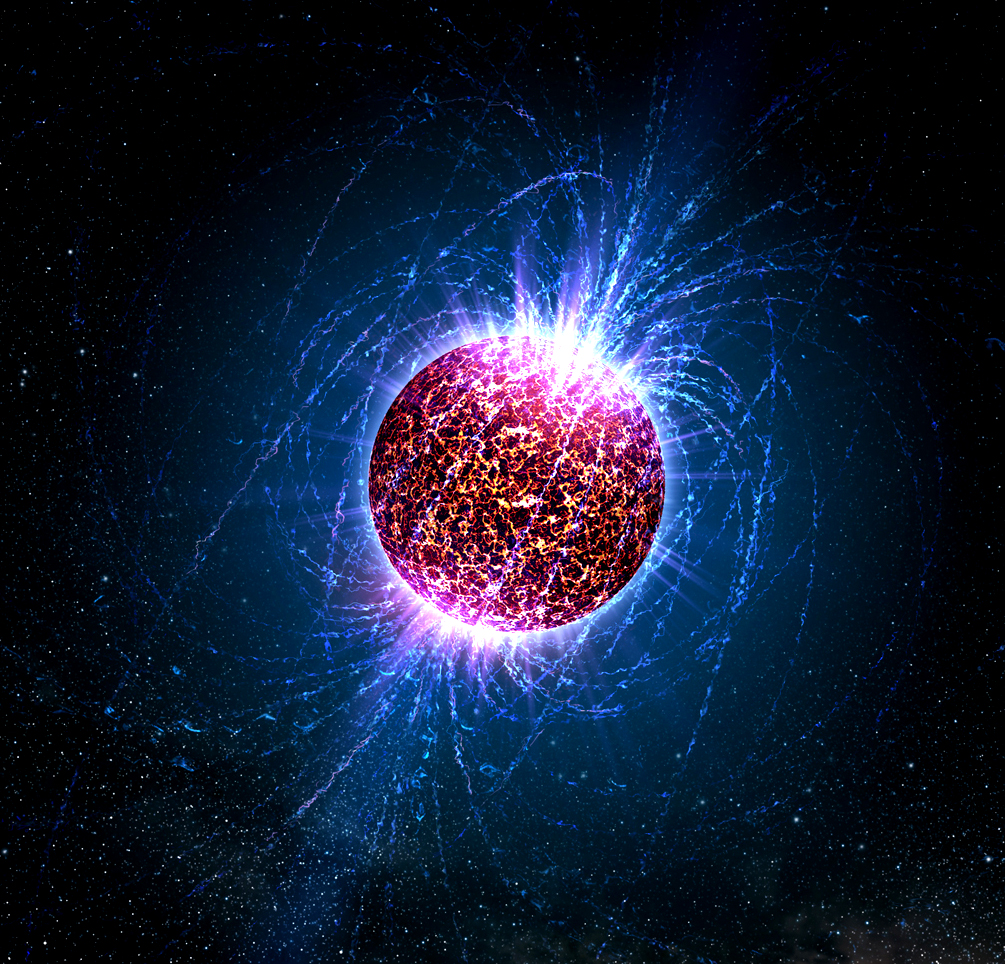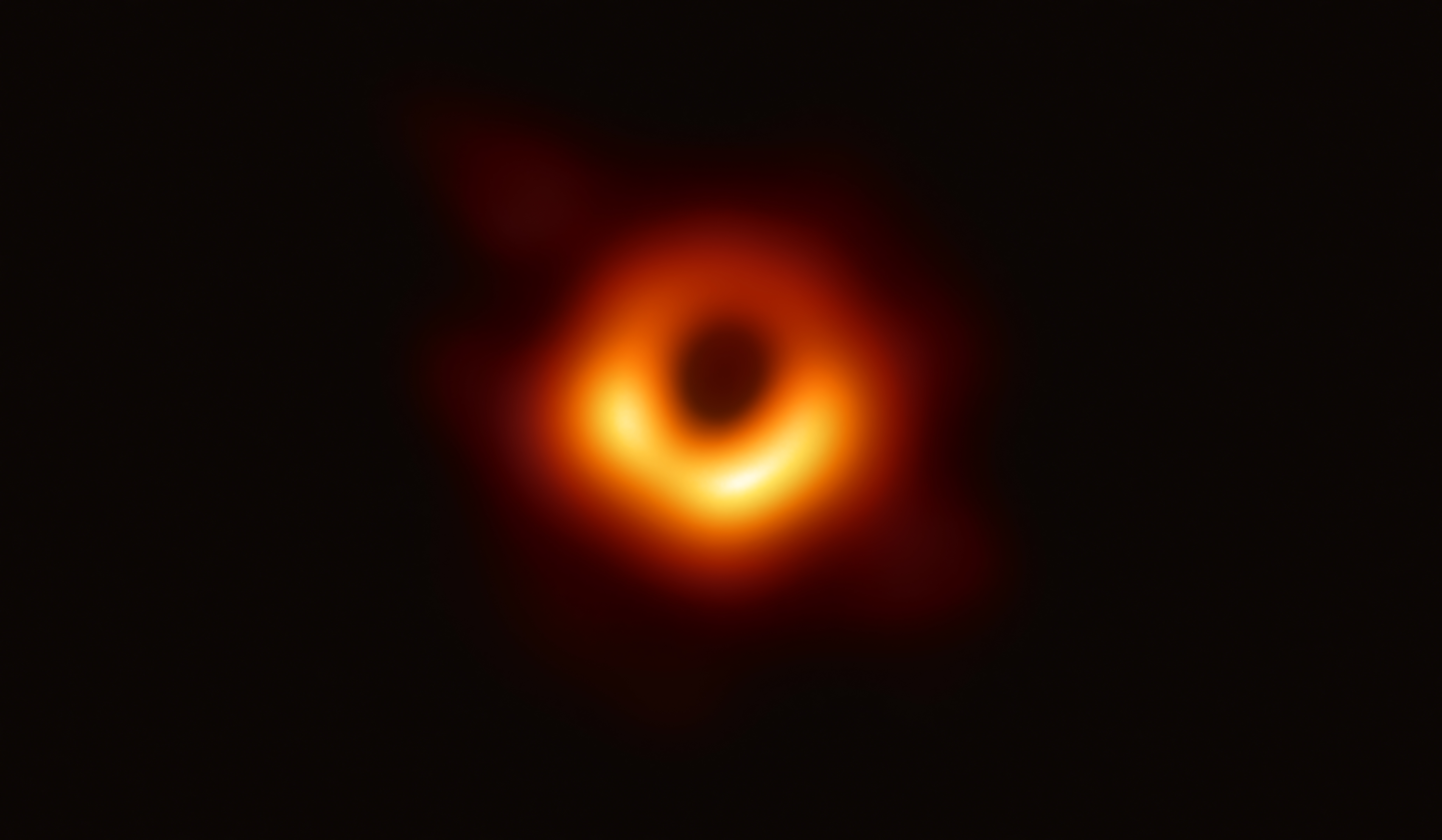|
RX J0822−4300
, - style="vertical-align: top;" , Galactic coordinates , 260.3841 −03.4718 RX J0822−4300, often referred to as a "Cosmic Cannonball", is a radio-quiet neutron star currently moving away from the center of the Puppis A supernova remnant at , making it one of the fastest moving stars ever found. Earlier, it was believed to move with speed as high as 1,500 km/s. Astronomers used NASA's Chandra X-ray Observatory to observe the star over a period of 11 years to determine its speed. Although the cosmic cannonball is not the only hypervelocity star discovered, it is unique in the apparent origin of its speed. Others may have derived theirs from a gravitational slingshot around the Milky Way's suspected supermassive black hole, Sagittarius A*. Current theories fail to explain how such speeds can be attained from a supernova explosion. It could be a possible quark star. See also * Puppis A Puppis A (Pup A) is a supernova remnant (SNR) about 100 light-years in diameter ... [...More Info...] [...Related Items...] OR: [Wikipedia] [Google] [Baidu] |
Puppis Scale
Puppis ("stern") is a constellation in the southern sky. It was originally part of the traditional constellation of Argo Navis (the ship of Jason and the Argonauts), which was divided into three parts, the other two being Carina (the keel and hull), and Vela (the sails). Puppis is the largest of the three constellations in square degrees. It is one of the 88 modern constellations recognized by the International Astronomical Union. History The constellation of Argo Navis is recorded in Greek texts, derived from ancient Egypt around 1000 BC. According to Plutarch, its equivalent in Egyptian astronomy was the "Boat of Osiris". As Argo Navis was roughly 28% larger than the next largest constellation, Hydra, it was sub-divided into three sections in 1752 by the French astronomer Nicolas Louis de Lacaille, including Puppis, which he referred to as "''Argûs in puppi''". Despite the division, Lacaille kept a single set of Bayer designations for the whole constellation, Argo. Therefo ... [...More Info...] [...Related Items...] OR: [Wikipedia] [Google] [Baidu] |
Chandra X-ray Observatory
The Chandra X-ray Observatory (CXO), previously known as the Advanced X-ray Astrophysics Facility (AXAF), is a Flagship-class space telescope launched aboard the during STS-93 by NASA on July 23, 1999. Chandra is sensitive to X-ray sources 100 times fainter than any previous X-ray telescope, enabled by the high angular resolution of its mirrors. Since the Earth's atmosphere absorbs the vast majority of X-rays, they are not detectable from Earth-based telescopes; therefore space-based telescopes are required to make these observations. Chandra is an Earth satellite in a 64-hour orbit, and its mission is ongoing . Chandra is one of the Great Observatories, along with the Hubble Space Telescope, Compton Gamma Ray Observatory (1991–2000), and the Spitzer Space Telescope (2003–2020). The telescope is named after the Nobel Prize-winning Indian-American astrophysicist Subrahmanyan Chandrasekhar. Its mission is similar to that of ESA's XMM-Newton spacecraft, also launched in ... [...More Info...] [...Related Items...] OR: [Wikipedia] [Google] [Baidu] |
Millisecond Pulsars
A millisecond pulsar (MSP) is a pulsar with a rotational period less than about 10 milliseconds. Millisecond pulsars have been detected in radio pulsar, radio, X-ray pulsar, X-ray, and gamma ray portions of the electromagnetic spectrum. The leading hypothesis for the origin of millisecond pulsars is that they are old, rapidly rotating neutron stars that have been spun up or "recycled" through Accretion (astrophysics), accretion of matter from a companion star in a close binary system. For this reason, millisecond pulsars are sometimes called recycled pulsars. Origins Millisecond pulsars are thought to be related to low-mass X-ray binary systems. It is thought that the X-rays in these systems are emitted by the accretion disk of a neutron star produced by the outer layers of a companion star that has overflowed its Roche lobe. The transfer of angular momentum from this accretion event can increase the rotation rate of the pulsar to hundreds of times per second, as is observed in mi ... [...More Info...] [...Related Items...] OR: [Wikipedia] [Google] [Baidu] |
Radio-quiet Neutron Stars
A radio-quiet neutron star is a neutron star that does not seem to emit radio emissions, but is still visible to Earth through electromagnetic radiation at other parts of the spectrum, particularly X-rays and gamma rays. Background Most detected neutron stars are pulsars, and emit radio-frequency electromagnetic radiation. About 700 radio pulsars are listed in the Princeton catalog, and all but one emit radio waves at the 400 MHz and 1400 MHz frequencies. That exception is Geminga, which is radio quiet at frequencies above 100 MHz, but is a strong emitter of X-rays and gamma rays. In all, ten bodies have been proposed as rotation-powered neutron stars that are not visible as radio sources, but are visible as X-ray and gamma ray sources. Indicators that they are indeed neutron stars include them having a high X-ray to lower frequencies emission ratio, a constant X-ray emission profile, and coincidence with a gamma ray source. Hypotheses Quark stars, hypothetica ... [...More Info...] [...Related Items...] OR: [Wikipedia] [Google] [Baidu] |
Sagittarius A*
Sagittarius A*, abbreviated as Sgr A* ( ), is the supermassive black hole at the Galactic Center of the Milky Way. Viewed from Earth, it is located near the border of the constellations Sagittarius and Scorpius, about 5.6° south of the ecliptic, visually close to the Butterfly Cluster (M6) and Lambda Scorpii. Sagittarius A* is a bright and very compact astronomical radio source. In May 2022, astronomers released the first image of the accretion disk around the event horizon of Sagittarius A*, using the Event Horizon Telescope, a world-wide network of radio observatories. This is the second confirmed image of a black hole, after Messier 87's supermassive black hole in 2019. The black hole itself is not seen; as light is incapable of escaping the immense gravitational force of a black hole, only nearby objects whose behavior is influenced by the black hole can be observed. The observed radio and infrared energy emanates from gas and dust heated to millions of d ... [...More Info...] [...Related Items...] OR: [Wikipedia] [Google] [Baidu] |
Supermassive Black Hole
A supermassive black hole (SMBH or sometimes SBH) is the largest type of black hole, with its mass being on the order of hundreds of thousands, or millions to billions, of times the mass of the Sun (). Black holes are a class of astronomical objects that have undergone gravitational collapse, leaving behind spheroidal regions of space from which nothing can escape, including light. Observational evidence indicates that almost every large galaxy has a supermassive black hole at its center. For example, the Milky Way galaxy has a supermassive black hole at its center, corresponding to the radio source Sagittarius A*. Accretion of interstellar gas onto supermassive black holes is the process responsible for powering active galactic nuclei (AGNs) and quasars. Two supermassive black holes have been directly imaged by the Event Horizon Telescope: the black hole in the giant elliptical galaxy Messier 87 and the black hole at the Milky Way's center (Sagittarius A*). Descr ... [...More Info...] [...Related Items...] OR: [Wikipedia] [Google] [Baidu] |
Hypervelocity Star
In astronomy, stellar kinematics is the Observational astronomy, observational study or measurement of the kinematics or motions of stars through space. Stellar kinematics encompasses the measurement of stellar Velocity, velocities in the Milky Way and its Satellite galaxies of the Milky Way, satellites as well as the internal kinematics of more distant Galaxy, galaxies. Measurement of the kinematics of stars in different subcomponents of the Milky Way including the thin disk, the thick disk, the Bulge (astronomy), bulge, and the stellar halo provides important information about the formation and evolutionary history of our Galaxy. Kinematic measurements can also identify exotic phenomena such as hypervelocity stars escaping from the Milky Way, which are interpreted as the result of gravitational encounters of binary stars with the Sagittarius A*, supermassive black hole at the Galactic Center. Stellar kinematics is related to but distinct from the subject of stellar dynamics, wh ... [...More Info...] [...Related Items...] OR: [Wikipedia] [Google] [Baidu] |
Supernova Remnant
A supernova remnant (SNR) is the structure resulting from the explosion of a star in a supernova. The supernova remnant is bounded by an expanding shock wave, and consists of ejected material expanding from the explosion, and the interstellar material it sweeps up and shocks along the way. There are two common routes to a supernova: either a massive star may run out of fuel, ceasing to generate fusion energy in its core, and collapsing inward under the force of its own gravity to form a neutron star or a black hole; or a white dwarf star may accrete material from a companion star until it reaches a critical mass and undergoes a thermonuclear explosion. In either case, the resulting supernova explosion expels much or all of the stellar material with velocities as much as 10% the speed of light (or approximately 30,000 km/s) and a strong shock wave forms ahead of the ejecta. That heats the upstream plasma up to temperatures well above millions of K. The shock continuou ... [...More Info...] [...Related Items...] OR: [Wikipedia] [Google] [Baidu] |
J2000
In astronomy, an epoch or reference epoch is a moment in time used as a reference point for some time-varying astronomical quantity. It is useful for the celestial coordinates or orbital elements of a celestial body, as they are subject to perturbations and vary with time. These time-varying astronomical quantities might include, for example, the mean longitude or mean anomaly of a body, the node of its orbit relative to a reference plane, the direction of the apogee or aphelion of its orbit, or the size of the major axis of its orbit. The main use of astronomical quantities specified in this way is to calculate other relevant parameters of motion, in order to predict future positions and velocities. The applied tools of the disciplines of celestial mechanics or its subfield orbital mechanics (for predicting orbital paths and positions for bodies in motion under the gravitational effects of other bodies) can be used to generate an ephemeris, a table of values giving ... [...More Info...] [...Related Items...] OR: [Wikipedia] [Google] [Baidu] |
Puppis A
Puppis A (Pup A) is a supernova remnant (SNR) about 100 light-years in diameter and roughly 6500–7000 light-years distant. Its apparent angular diameter is about 1 degree. The light of the supernova explosion reached Earth approximately 3700 years ago. Although it overlaps the Vela Supernova Remnant, it is four times more distant. A hypervelocity neutron star known as the Cosmic Cannonball has been found in this SNR. Puppis X-1 Puppis X-1 (Puppis A) was discovered by a Skylark flight in October 1971, viewed for 1 min with an accuracy ≥ 2 arcsec, probably at 1M 0821-426, with Puppis A ( RA 08h 23m 08.16s Dec -42° 41′ 41.40″) as the likely visual counterpart. Puppis A is one of the brightest X-ray sources in the X-ray sky. Its X-ray designation is 2U 0821-42. Gallery Image:Puppis labeled.jpg, wide-field composite view of the supernova remnant Puppis A (X-rays from ROSAT ROSAT (short for Röntgensatellit; in German X-rays are called Röntgenstrahlen, in honour ... [...More Info...] [...Related Items...] OR: [Wikipedia] [Google] [Baidu] |
Radio-quiet Neutron Star
A radio-quiet neutron star is a neutron star that does not seem to emit radio emissions, but is still visible to Earth through electromagnetic radiation at other parts of the spectrum, particularly X-rays and gamma rays. Background Most detected neutron stars are pulsars, and emit radio-frequency electromagnetic radiation. About 700 radio pulsars are listed in the Princeton catalog, and all but one emit radio waves at the 400 MHz and 1400 MHz frequencies. That exception is Geminga, which is radio quiet at frequencies above 100 MHz, but is a strong emitter of X-rays and gamma rays. In all, ten bodies have been proposed as rotation-powered neutron stars that are not visible as radio sources, but are visible as X-ray and gamma ray sources. Indicators that they are indeed neutron stars include them having a high X-ray to lower frequencies emission ratio, a constant X-ray emission profile, and coincidence with a gamma ray source. Hypotheses Quark stars, hypothetic ... [...More Info...] [...Related Items...] OR: [Wikipedia] [Google] [Baidu] |








